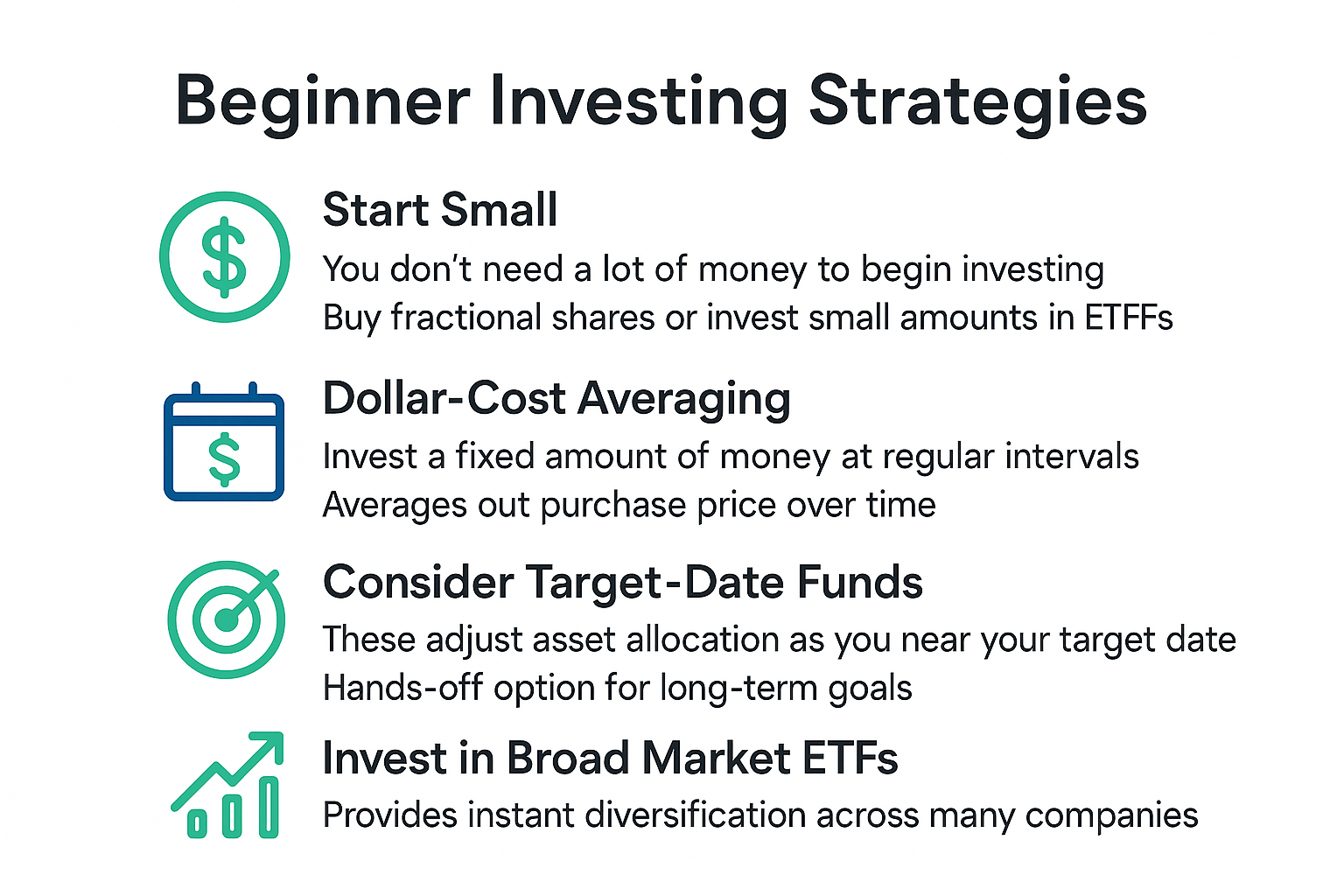Investing for Beginners: A Step-by-Step Guide to Your Financial Future

The term "investing" can often conjure images of Wall Street traders, complex jargon, and significant sums of money. This perception can be intimidating for beginners, leading many to believe that investing is only for the wealthy or financially savvy. However, the truth is that investing is a crucial step towards building long-term wealth and achieving your financial goals, and it's more accessible than you might think. Whether you dream of early retirement, buying a home, or simply growing your savings, understanding the basics of investing is the first step towards securing your financial future. This comprehensive guide will break down the world of investing into simple, manageable steps, empowering you to start your journey with confidence.
Why Start Investing Early? The Power of Time and Compounding
One of the most compelling reasons to start investing as early as possible is the incredible power of compound interest. Albert Einstein famously called it the "eighth wonder of the world." In the context of investing, compounding means that your earnings generate their own earnings over time. The longer your money is invested, the more opportunities it has to grow exponentially. Even small, consistent investments made early in life can yield significantly larger returns over the long term compared to larger investments made later. Time is truly your greatest ally when it comes to investing.
Understanding Your Risk Tolerance: Know Your Comfort Zone
Before diving into specific investments, it's essential to understand your risk tolerance – your comfort level with the potential for investment losses in exchange for the possibility of higher returns. Factors that influence your risk tolerance include your age, financial situation, time horizon for your goals, and personal comfort level with market fluctuations.
- Conservative: You prioritize preserving capital and are comfortable with lower potential returns in exchange for lower risk.
- Moderate: You are comfortable with some market fluctuations and seek a balance between growth and preservation.
- Aggressive: You are willing to accept higher potential losses for the possibility of significant returns and typically have a longer time horizon.
Understanding your risk tolerance will help you choose investments that align with your comfort level and prevent emotional decision-making during market ups and downs.
Different Types of Investments for Beginners:
The world of investments can seem vast, but here are some common and accessible options for beginners:
- Stocks (Shares of Ownership): When you buy a stock, you're purchasing a small piece of ownership in a publicly traded company. Stocks offer the potential for high growth but also come with higher volatility (price fluctuations).
- Bonds (Loans to Governments or Corporations): When you buy a bond, you're essentially lending money to a government or corporation. Bonds are generally considered less risky than stocks but typically offer lower potential returns.
- Mutual Funds (Pooled Investments Managed by Professionals): Mutual funds pool money from many investors to invest in a diversified portfolio of stocks, bonds, or other assets. They offer 1 instant diversification and professional management, making them a popular choice for beginners.
- Exchange-Traded Funds (ETFs): Similar to mutual funds, ETFs hold a basket of assets but trade on stock exchanges like individual stocks. They often have lower expense ratios (fees) than traditional mutual funds and offer flexibility in trading.
Setting Your Investment Goals: Aligning Your Money with Your Dreams
Before you start investing, define your financial goals. What are you saving for? Retirement? A down payment on a house? Your child's education? The timeframe for these goals will influence your investment choices. For long-term goals (over 10 years), you might consider investments with higher growth potential, like stocks or stock-based mutual funds/ETFs. For shorter-term goals, you might opt for more conservative options like bonds or money market funds.
Opening a Brokerage Account: Your Gateway to Investing
To start investing, you'll need to open a brokerage account. A brokerage is a financial institution that allows you to buy and sell investments. There are two main types of brokers:
- Traditional (Full-Service) Brokers: These offer personalized advice, financial planning, and research tools. They typically charge higher fees.
- Discount (Online) Brokers: These offer a platform for you to buy and sell investments online or through a mobile app. They typically have lower fees and are a popular choice for beginners.
When choosing a broker, consider factors like fees, investment options, research tools, educational resources, and user-friendliness of their platform. Popular online brokers for beginners include Fidelity, Charles Schwab, Vanguard, Robinhood, and Webull.
Funding Your Account: Putting Money to Work
Once your brokerage account is open, you'll need to fund it. Most brokers offer several ways to deposit money, including:
- Electronic Funds Transfer (EFT): Linking your bank account for easy transfers.
- Wire Transfers: For larger amounts.
- Check Deposits: Through mail or mobile deposit.
Start with an amount you are comfortable with and consider setting up recurring transfers to automate your investments (similar to automating savings).
Making Your First Investments: Taking the Plunge
Choosing your first investments can feel daunting. Here are a few beginner-friendly strategies:
- Start Small: You don't need a lot of money to begin investing. Many brokers allow you to buy fractional shares of stocks or invest in ETFs with small initial amounts.
- Dollar-Cost Averaging: Invest a fixed amount of money at regular intervals (e.g., monthly) regardless of the market price. This helps to average out your purchase price over time and reduces the risk of investing a large sum right before a market downturn.
- Consider Target-Date Funds: These are mutual funds or ETFs that automatically adjust their asset allocation (the mix of stocks and bonds) over time as you get closer to your target date (e.g., retirement). They are a hands-off option suitable for long-term goals.
Invest in Broad Market ETFs: These ETFs track a broad market index like the S&P 500, providing instant diversification across a wide range of companies.

The Importance of Diversification (Revisited): Spreading Your Risk
As mentioned in the context of saving, diversification is also crucial in investing. Don't put all your money into a single stock or asset class. Spreading your investments across different types of assets (stocks, bonds, ETFs) and sectors can help to reduce risk. If one investment performs poorly, others may perform well, helping to balance out your overall returns.
Long-Term Perspective: Investing is a Marathon, Not a Sprint
Investing is a long-term game. The stock market will experience ups and downs. Don't get discouraged by short-term market fluctuations or try to time the market (predicting when to buy and sell). Stay focused on your long-term goals, invest consistently, and avoid making emotional decisions based on market noise.
Conclusion:
Investing for your future doesn't have to be complicated or exclusive. By understanding the basics, assessing your risk tolerance, opening a brokerage account, and starting with beginner-friendly investments, you can embark on a journey towards building long-term wealth and achieving your financial aspirations. Remember that time is your greatest asset, and even small, consistent steps taken today can lead to significant financial rewards tomorrow. Don't wait – start your investment journey now and take control of your financial future.



